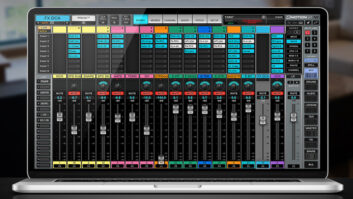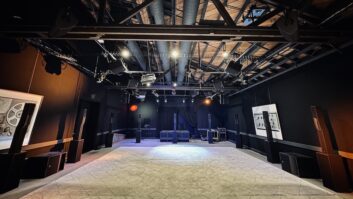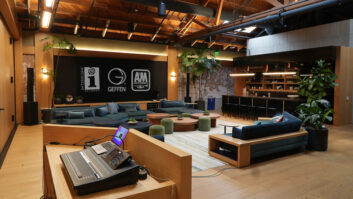It’s ironic, but for all of the time many of us spend creating audio, we spend very little time listening. Sure, we hear things all day, but listening is an art in itself, and critical listening is the highest form of the craft. The difference between hearing and listening is about as wide as the gap between sipping a chardonnay and chugging a Coors.
As producers and engineers, we have to focus on the big picture and still be acutely aware of the minutiae. Musicians in the studio focus on the performance, and no amount of rattling, creaking, buzzing, rumble or hiss will sway certain players from their way of hearing. How often have you heard a take with great “feel,” but then found that one bandmember is overly bothered by a slightly anticipated 32nd note in the middle of a four-bar fill that no one but that player can hear?
Critical listening requires training and practice in the ability to discern both technical flaws and performance issues such as tempo, intonation and pitch. (Of course, working with pitch-challenged vocalists or unsteady drummers also requires finesse and diplomacy, but that’s another issue.) Unfortunately, expertise in the listening art can be severely hampered by inaccurate monitors or a poor acoustical environment. Too often, the investment in decent monitors or acoustical treatments is deferred in lieu of some cool new “must-have” effects processor or other studio toy.
This situation is made worse by the near-field myth: the erroneous assumption that the acoustical environment is unimportant as long as the listener is in the near-field. True, the acoustical effects of any space are reduced when monitoring in the near-field, but once playback levels get excessive, all bets are off. If a sub and/or surround speakers are added to the monitoring system, then the equation becomes infinitely more complex.
Some engineers have the amazing ability to compensate for quirky control rooms or lousy monitors, but is that the way you want to work? A key indicator of a monitoring system’s health is how your mixes sound when played on other systems. A good mix should sound consistent on a boombox, headphones or a high-end home stereo; a mix that’s boomy, thin, dull or overly bright signifies an underlying problem.
Another question is how we listen. Sitting exactly in the sweet spot of a great control room is fine, but occasionally standing off to the side with one ear plugged may offer a better indication of how the mix may sound to users under less-than-ideal conditions. One favorite trick is checking mixes on a car system, but here again, be aware that playback during rush-hour traffic will sound very different from the way it sounds in a studio parking lot at 3 a.m.!
In our annual issue devoted to studio design and acoustics, we look in-depth at networking a facility, laying the infrastructure for years to come. Also, Randy Alberts looks at what’s new in acoustical materials, Maureen Droney chats with top designer Chris Pelonis, Buck Moore offers acoustical fixes for small concert venues, and we present the Class of 2001, spotlighting 19 of the past year’s hottest studio installs. That feature alone may get you fired up about tweaking your listening space. And if you do, there might be a spot for you in our Class of 2002.
Let us know…







